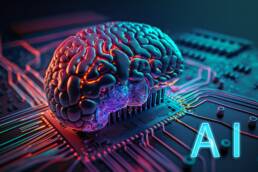Modern software applications are becoming increasingly reliant on machine learning technology and analytics to generate predictive models that help empower businesses in their decision-making process. Machine learning SaaS applications are the driving force behind this shift, offering a way for developers to quickly and easily build powerful AI-driven applications. However, producing these applications can be a challenge, with a wide array of techniques and technologies to implement and master before a finished product is released. In this article, we’ll explore some of the most important strategies to consider when crafting high-performance machine learning SAAS applications.
The first step to achieving success with ML SAAS applications is to define a clear set of objectives. It’s important to start with a vision of what the application should be capable of achieving: whether it’s complex pattern recognition or just simple data analysis. Once these goals have been set, it’s time to start crafting an optimal architecture that will bring the chosen objectives to life.
The architecture should be designed and structured in such a way that it can scale easily as the application evolves. This means that it must be able to handle an ever-increasing amount of data and user requests. To build a reliable system, consider using a microservice architecture to easily distribute the application’s workload and resources.
Another important factor when crafting machine learning SaaS applications is data management. To achieve the highest levels of accuracy and performance, data should be collected from reliable sources and prepared for use in the application. Incorporating sensible data governance rules will help maintain data reliability and give the application the best chance of success in the long run.
The machine learning model at the core of the application will need to be trained and tested to ensure it meets the required standards of accuracy and performance. This should be done with the help of quality metrics to ensure that the model produces the expected outputs. Data augmentation and optimization techniques, such as altering feature sets, also play a key role in producing models of high quality.
Finally, testing and evaluating a SAAS application is essential for making sure that it performs as expected. Include a testing phase within the development cycle to make sure that all features and functionality are working properly. Paying attention to production performance metrics, such as latency and responsiveness, can provide clues to potential problems before they become major issues.
By following these strategies, developers and engineers can build machine learning SAAS applications that meet modern demands and perform to the highest standards. The choices made throughout the development process can have a significant effect on future updates and improvements to the application. With the right approach, machine learning SAAS applications can give businesses powerful tools for optimizing their operations and gaining valuable insights.




